From Web 3.0 to DeFi, IOSG Ventures Founder Explains Investment Logic and Landscape
This article is from IOSG, authored by Jocy Lin, founder of IOSG Ventures.
Today is the annual reunion day with old friends, and the atmosphere is very relaxed. Today is also a day for reporting results; the past year has seen ups and downs in the entire crypto economy. However, IOSG Ventures adheres to value investing, remains committed to value investing, and practices long-termism, always being friends with time. Here, I will share how, from the perspective of institutional investors, we seek universal investment value in the changing decentralized economic market.
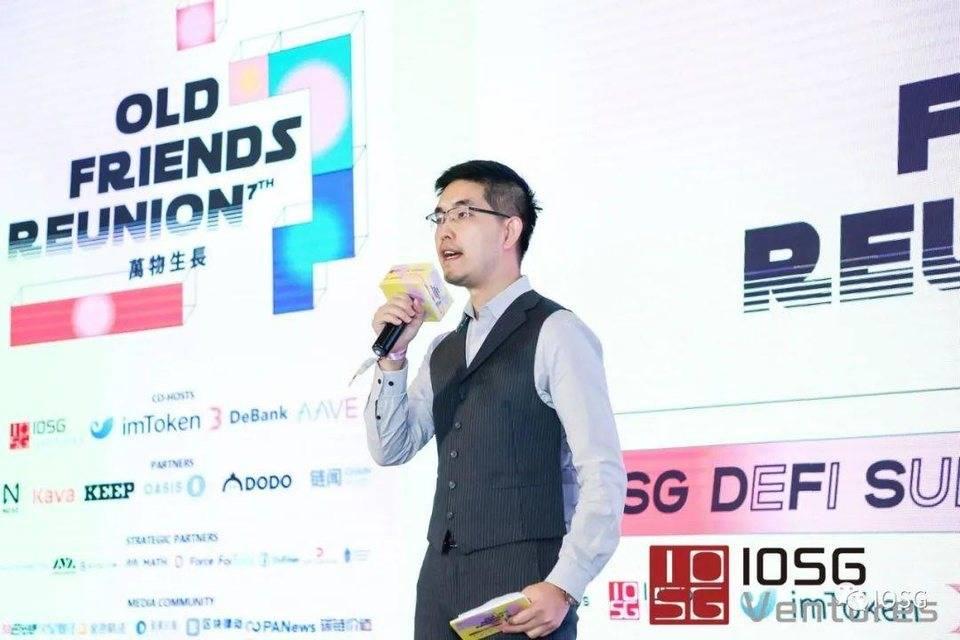
First, let me introduce our investment style and philosophy. IOSG Ventures is a research-driven and community-driven early-stage crypto fund. Our crypto fund mainly revolves around the reinvention of the crypto economy driven by the combination of finance and open-source code, focusing on the entire Web 3.0 infrastructure, from DeFi's open finance to cross-chain.
There are three very key points here: insight, action, and vision. Why do I say this? We hope to find the right team at the right cycle and the right time to help them build the best products to meet market demand.
We believe that cycles are very important in investing. Secondly, a good team must create a product that meets market demand, which is also very important.
Ultimately, how far a team can go depends on whether its founders have leadership skills. As we know, blockchain projects are all open-source projects, and open-source projects face risks. How can they avoid being fragmented by the community? There must be very strong community leadership.
Next, I will discuss how to think about: the past, the present, and the future.
What was the map of DeFi in the past? What were the changes in the industry? First, I am a research-oriented person, and I will show you the changes in the Nasdaq stock index in the United States over the past thirty to forty years, with several ups and downs, including the previous stock market circuit breakers. Around the year 2000, the internet bubble reached its peak, and in 2008, the subprime mortgage crisis triggered a financial crisis.
Every bubble indicates that the U.S. is a barometer of the global economy. If we look at each decade as an economic cycle, it produces various innovations in biology, technology, healthcare, and blockchain. We can see the earliest decade led by IBM's hardware era to the software open-source era from 1990 to 1999.
The software open-source era produced companies like Microsoft, Apple, and Google; from 2000 to 2008, this was the era of the internet, during which many new open-source and open companies emerged, including Twitter and Airbnb. After 2008, we entered the wave of mobile internet, where we saw the rise of giants like WeChat and Toutiao.
It can be seen that the entire Nasdaq index has a lagging effect. For example, Airbnb, Uber, and Spotify, which went public in 2018 and 2019, were all founded in 2008. The hot companies like Apple and Microsoft in 2008 were founded in 1998, and IBM was the best-performing company in the stock market in 1998.
In terms of cycles, Bitcoin appeared in 2009. Recently, PayPal opened up to over 300 million users who can purchase Bitcoin, and Square bought 50 million Bitcoin. All the smartest people from Wall Street and Silicon Valley have flocked into the crypto economy, allowing us to predict what the future Web 3.0 era will look like.
From 2009 to 2019, we experienced ten years. What kind of projects will guide the new smart contract or new internet era in the next ten years? We are looking forward to it.
Next, let's talk about the infrastructure of open finance, which is very interesting. In the past, we told a story called "software is eating the world." Now it's different; blockchain is eating the financial world. Finance is the largest industry in the world. Why do I say this?
In every country, the financial proportion of GDP is very high, and most financial products are currently trapped in very outdated technology. However, we see that DeFi, open finance, and decentralized finance have taken three years to level the playing field that traditional finance has taken 50 to 80 years to traverse.
We can see that in DeFi, trading units, derivatives, lending, trading, and various foundational infrastructures and modular components are rapidly emerging and changing. We can see that the entire DeFi finance is moving from outside in, importing from traditional finance to decentralized finance, and this innovation will bring about a significant wave of opportunities.
Next, let's talk about what we are doing and how we plan to do it.
First, IOSG Ventures was established in 2017, and we have invested in many projects in the DeFi field. The earliest projects we invested in were MakerDAO and DDEX in 2017. At that time, DeFi was still very early in the blockchain world. However, from 2019 to 2020, over the course of more than a year, we researched various DeFi projects in the market. At this time, we submitted a report card that included everything from the Ethereum infrastructure to the protocol layer, application layer, and middleware.
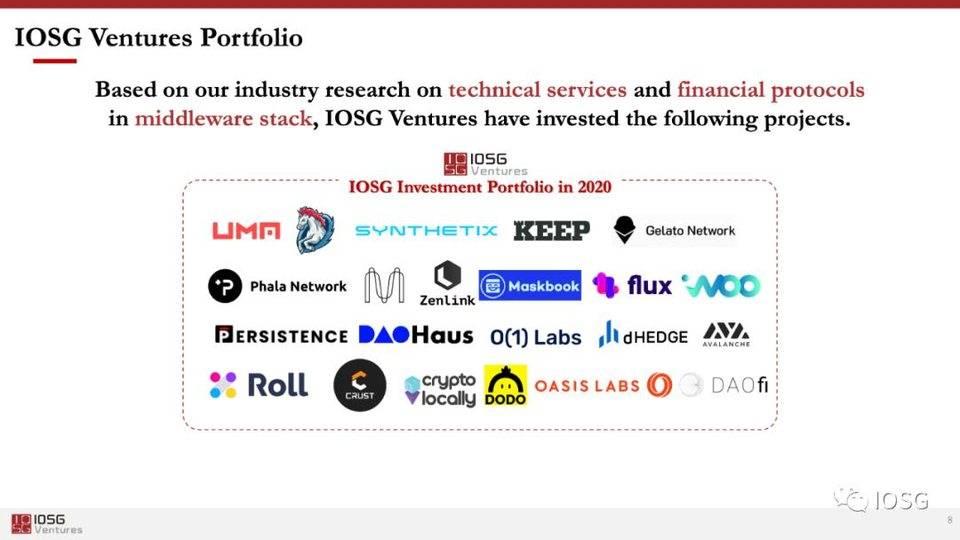
Let me give a few examples of why we invested in these projects. For instance, 1inch is a decentralized trading platform aggregator that can aggregate all trading data. tBTC is the most important bridge connecting Ethereum and Bitcoin, potentially bringing a market cap of $200 billion for Bitcoin. UMA builds a universal smart contract template that allows anyone to issue their own synthetic assets through UMA. Gelato helps users automatically liquidate their assets when Bitcoin drops significantly.
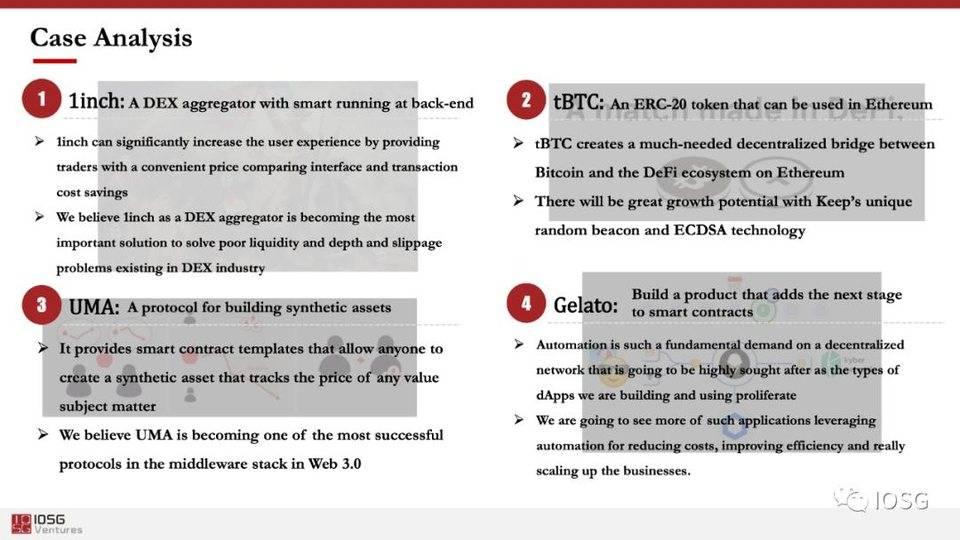
Next, I will elaborate on how to view and research each track.
Web 3.0 & DeFi
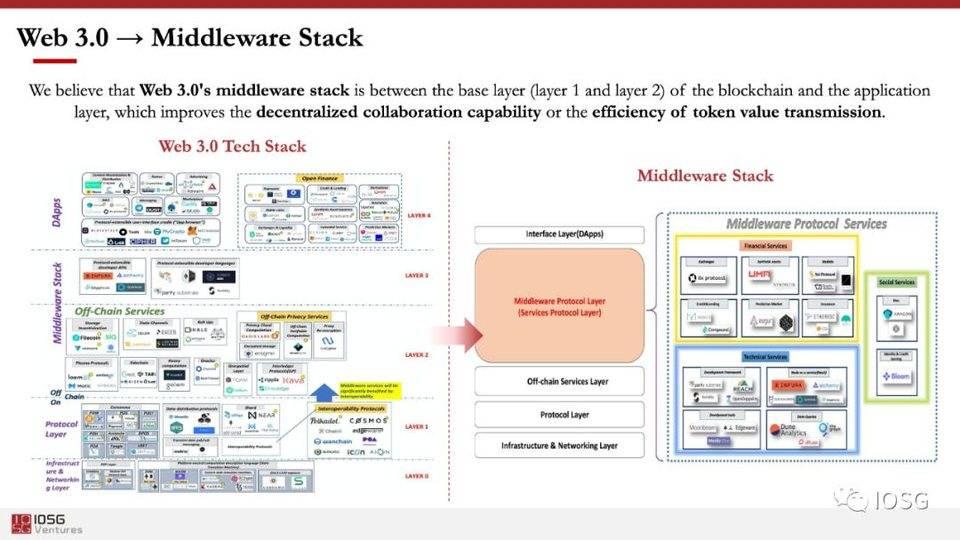
Last year, we created a technology stack map for Web 3.0, from its foundational infrastructure to Layer 1, middleware, and application layer, with the application layer further divided into Open Finance. Why discuss the technology stack of Web 3.0?
In the Web 3.0 era, users will have more control over their identity and data, sharing data portrait rights with BAT. High switching costs, strong network effects, and user experience are the barriers for internet giants, which will not be disrupted in the short term. However, the pursuit of user rights over identity and data will eventually ignite a revolution.
As the technology cycle of Web 3.0 arrives, distributed systems, cryptography, and smart contracts are penetrating into people's lives like never before, leading the industry into a bubble frenzy. The inflow of investment capital (speculative value) is faster than that of productive capital (practical value), causing asset prices to continue to inflate to an inevitable "collapse."
However, the foundational infrastructure technology related to the industry will still establish itself as the new default starting point for the industry, and platforms that continuously derive and define segmented industry applications will emerge in large numbers during this cycle.
The application form of Web 3.0 will shift from product-driven to user-centered open-source product forms. The Web 3.0 technology stack constitutes the overall framework of blockchain projects, while Tokens are the blood and flesh that drive the entire ecosystem. The business model of Token Economy is also born, promoting users to contribute content and data within applications by changing incentive models and value distribution systems.
We see opportunities in middleware in Web 3.0. Middleware is a crucial connector between the entire infrastructure and application layer, enabling the usability of the entire blockchain and greatly improving user acceptance.
The protocols in the financial middleware layer have a lot of interactivity and composability potential, allowing for the emergence of some derivative application scenarios. Most DeFi protocol projects are becoming increasingly decentralized, composable, and modular within the open finance ecosystem. The greatest value they will unleash in the future is providing a basic framework and basic business logic for many top-level applications.
Next, let's talk about DeFi. In March of this year, we created a DeFi map, which circulated in many public accounts in China in June. The logic behind this map is simple: one is bottom-up, where Ethereum has created a large foundational infrastructure representing the flow of Tokens. Ethereum has generated middleware protocols and applications, so Tokens flow upward from the bottom. Tokens in the DeFi map are alive and can flow.
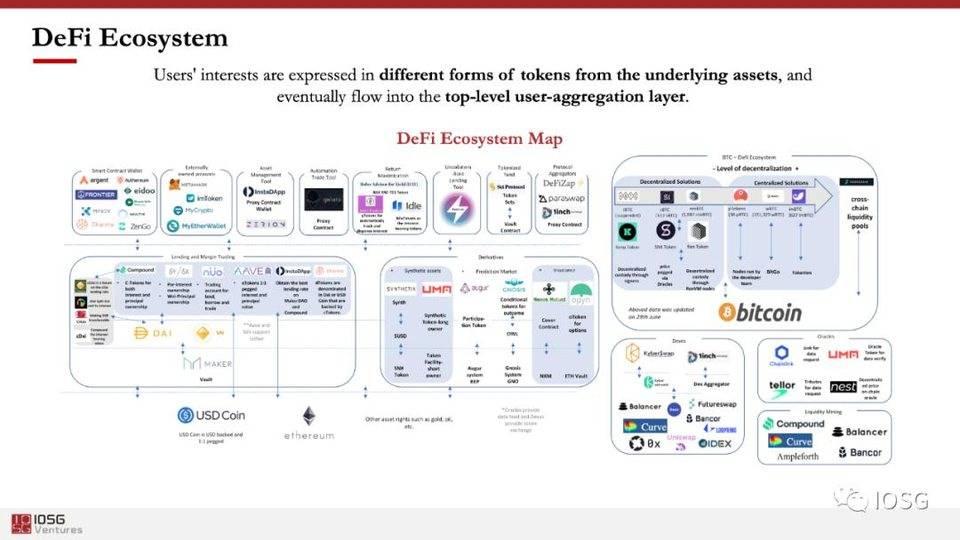
Looking from left to right, protocols have interactivity, composability, and modularity, which allows DeFi to burst with high imagination.
DEX & AMM
Next, I will discuss another point: the recently popular decentralized trading platforms and AMM. In September, the data showed that the decentralized platform representative Uniswap's trading volume exceeded that of Coinbase, which indicates a significant trend.
Decentralized trading platforms are gradually swallowing the trading volume of centralized platforms. We see $57 billion in trading volume on centralized platforms, with spot trading at $3.7 trillion and derivatives market at $6.5 trillion. Thus, we can see that the market for decentralized contract trading platforms is very large. We believe that if DEX wants to maintain this momentum, it needs to make improvements.
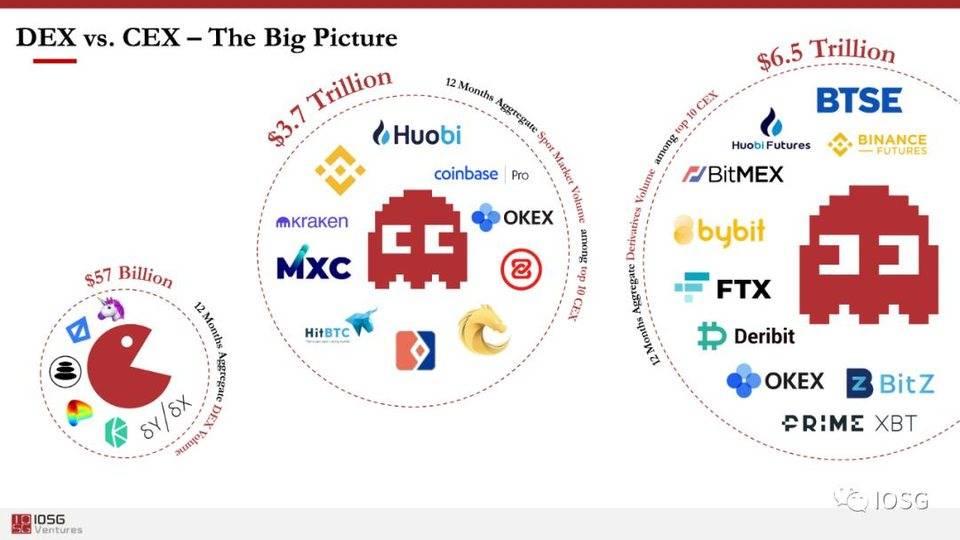
We also created a complete AMM trading map, showing the earliest order book trading model led by IDEX, to automated trading AMM models like Uniswap and Balancer, to DODO's proactive AMM model, and finally to an aggregator trading platform, where we see opportunities for AMM.
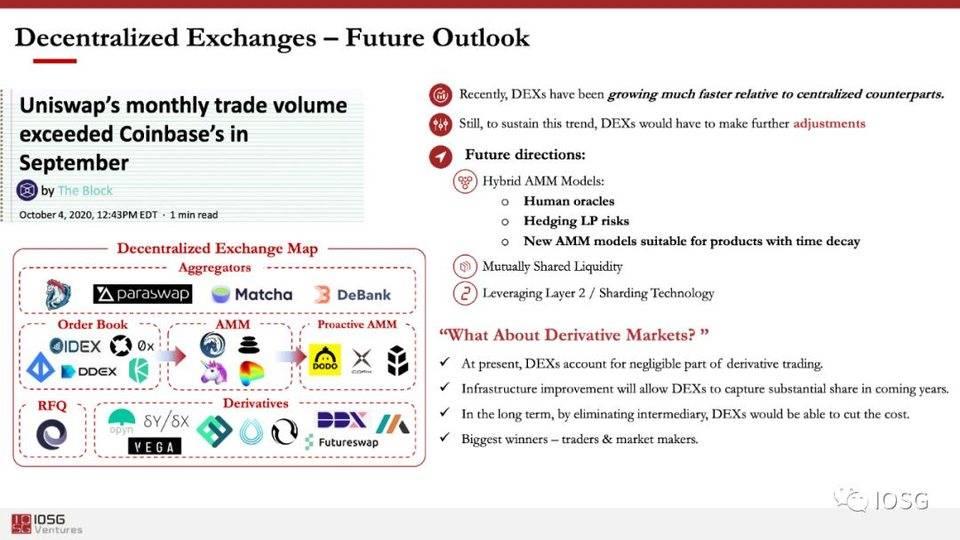
AMMs that use oracles, like DODO, are several times more efficient than basic AMM types. We are optimistic about innovations in the oracle direction, such as allowing professional traders to influence AMMs, making them smarter and more accurate. Hedging liquidity provider risks is crucial—liquidity providers must fully understand the risks and potential losses in the market-making process. We expect to see more hedging products that can help limited partners protect their positions. We anticipate more use cases for AMM, with a potential area being the creation of AMMs suitable for trading derivatives with time decay.
For the derivatives market, we believe that improvements in blockchain technology will ultimately enable decentralized exchanges to win the derivatives market by eliminating intermediaries. We expect decentralized exchanges to significantly reduce costs, making traders and market makers the biggest beneficiaries. Recently, everyone has heard that BitMEX's CTO was sued by the U.S. SEC, and we also see discussions around derivatives market regulation in the UK and Europe. Derivatives may be the next big opportunity.
NFT
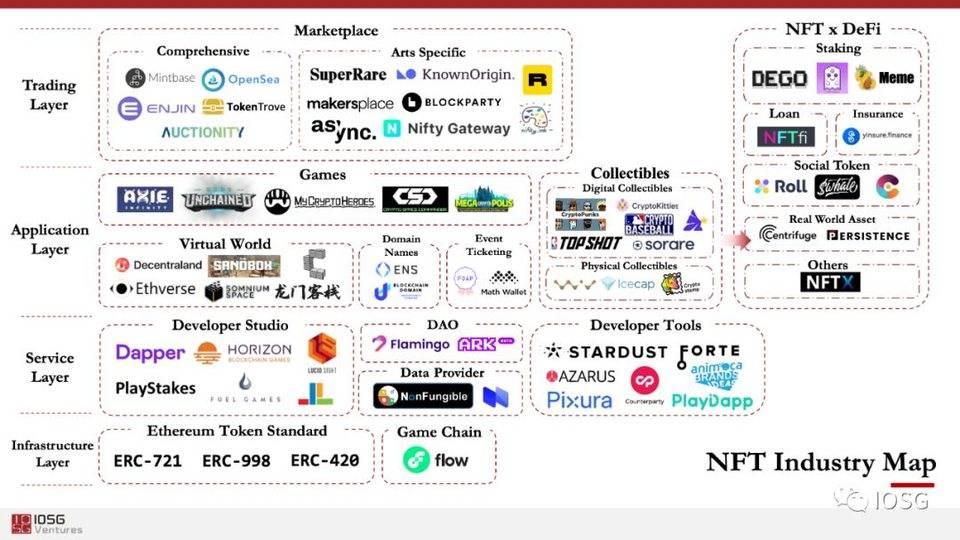
Next, let's talk about NFTs, which are currently very hot. Today, SuperRare has an exhibition at our Summit. Over the past two years, we have witnessed the growing field of NFTs. From underlying token protocols and public chains to development platforms, applications, and trading platforms, the landscape of NFTs now covers multiple layers. It is worth noting that the combination of DeFi attributes such as staking, lending, and insurance will become the next explosion point for NFTs.
Today, NFTs are no longer limited to games and collectibles; their unique social and artistic creation attributes are gradually emerging. In the past, people associated NFTs with games and collectibles because they could carry unique value. However, we believe that scarcity is just the surface of NFTs. We are deeply exploring the deeper attributes of NFTs, especially focusing on their relationship with DeFi and new types of NFTs like social tokens. Currently, the total historical trading volume of NFTs is $13 million, and we can expect that with the support of DeFi attributes, the scale of NFTs will break through $100 million in the near future.
Layer 2
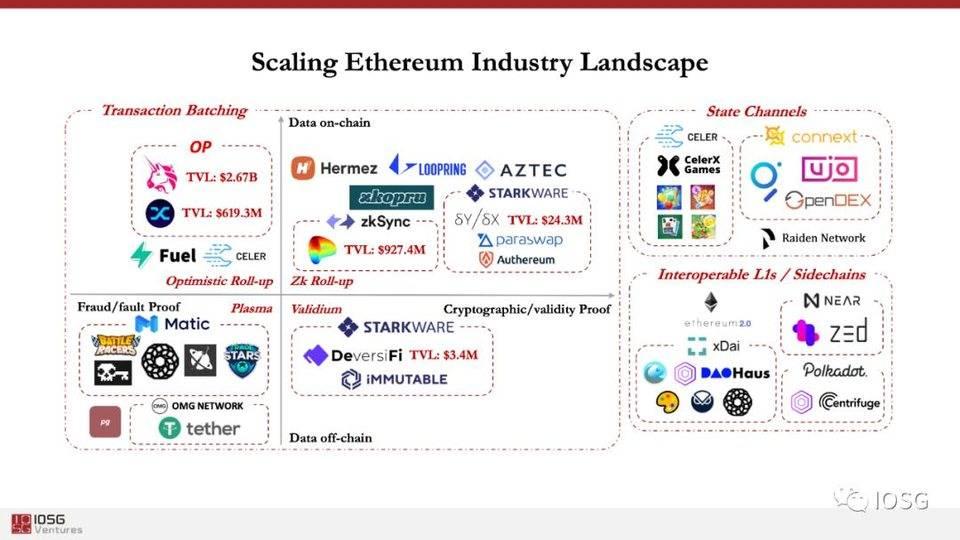
We have conducted a broad summary of Ethereum's scalability solutions, roughly divided into three categories: transaction bundling on-chain (Rollup), state channels (Plasma), and other interoperable public chain solutions, including sidechains. The two most mainstream solutions are ZK Rollup and Optimistic Rollup.
The main difference between them is that the former uses zero-knowledge proofs, while the latter uses fraud proofs. zkRollup (mainly referring to zkSNARK, zkPlonk, etc.) has poor support for general-purpose smart contracts, making it suitable only for token transfers in the short term. This is one of the reasons why it is very suitable for decentralized exchanges or payment transfers. Optimistic Rollup, on the other hand, supports the implementation of any smart contract logic, making it very suitable for complex DeFi applications.
The biggest difference between Rollup solutions and Plasma solutions is that the former places transaction data on-chain, while Plasma only notarizes off-chain data on the Ethereum chain, which raises a data availability issue, resulting in a poor user experience and an inability to achieve true trustlessness.
Transaction bundling scalability projects can be further subdivided based on their chosen verification methods and whether the original transaction data is on-chain. The most popular technical routes among DeFi projects are Optimistic Rollup, due to its ease of running smart contracts, and ZK Rollup, due to its powerful performance and fast transaction finality.
State channels and public chains/sidechains each have their suitable scenarios. DApps with high latency requirements tend to choose state channels, while many public chains/sidechains provide strong performance and very low transaction costs.
We foresee that most DeFi ecosystems will operate on Rollup-based solutions in the future, which will create strong network effects and monopolize leading players. However, the DApp market extends far beyond DeFi, leaving ample space for the long-tail market of scalability solutions.
We believe that Layer 2 scalability solutions are not just temporary solutions before the arrival of ETH 2.0, but rather can make Ethereum suitable for more use cases, attracting users far greater in scale than today.
We believe that the next 6-12 months will be a critical time window for the exponential growth of Layer 2 scalability technology. We are at the bottom of "hockey stick growth," and anyone who cares about Ethereum should be excited about this.
Traditional Finance
Next, I will talk about traditional finance.
Just now, we discussed what problems traditional finance can solve and what it cannot solve. As we know, DeFi protocols are still efficient but face very poor infrastructure. Currently, the biggest lack is users.
In addition to lacking crypto users, traditional finance also has some very usable traditional assets that can be integrated into the DeFi space. We have researched several companies, such as Centrifuge and Persistence, which use traditional supply chain financial assets on the DeFi chain. Additionally, Teller Finance allows users in the crypto circle to complete lending activities in DeFi using credit data from the traditional world.
Therefore, we say that finance is an innovation that moves from outside in, and DeFi definitely needs centralized finance as a driving force. Moreover, centralized finance users are still very high-quality users in this industry, so many information silos in traditional finance become more composable and aggregable in DeFi.
Insurance
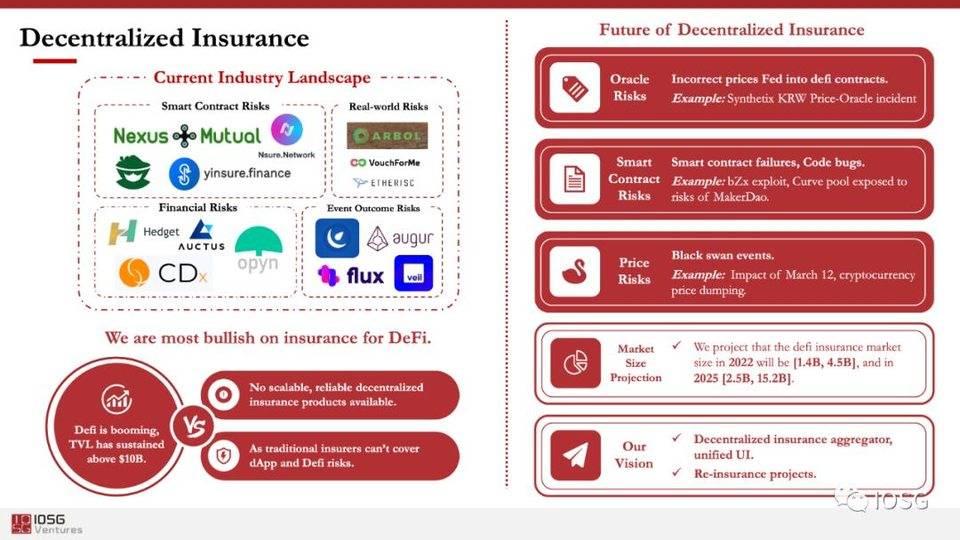
Next, let's talk about insurance, which is also a hot topic. The concept of decentralized insurance is broad and covers the following four categories: 1. Smart contract insurance: such as Nexus Mutual's coverage for losses caused by code bugs; 2. Real-world risks: such as Arbol providing compensation for insufficient rainfall; 3. Financial product risks: such as Opyn using options to hedge against Ethereum price fluctuations; 4. Event risks: betting on football match outcomes or even presidential elections through prediction markets like Augur.
DeFi is booming, but reliable insurance products are still lacking. Traditional insurance models cannot provide guarantees for the risks of DApps and DeFi. There are three risks that require DeFi-native insurance products to cover: 1. Oracle risk: such as Synthetix experiencing price errors for KRW; 2. Smart contract risk: such as bZx being hacked; 3. Price risk: such as the Black Swan event on March 12.
We expect the DeFi insurance market to reach $1.4-4.5 billion in 2022 and $2.5-15.2 billion by 2025. The current market TVL (Total Value Locked) is $10 billion. Assuming 10% of the TVL purchases insurance, with an annual premium of 5%, the current market size would be $52 million, with premium income of $2.5 million.
We are optimistic about two directions for the future of DeFi insurance: insurance aggregators, similar to how 1inch operates for AMM; and reinsurance projects that provide a safety net for systemic risks in the field.
BTC-Ethereum Bridge
Next, let's talk about the Bitcoin bridge. Over the past six months, Bitcoin has surged from hundreds and thousands to tens of thousands, which is very exciting.
The market cap of DeFi has reached $15 billion (accounting for one-third of Ethereum's market cap), indicating that the assets Ethereum can contribute to DeFi are already quite limited. New growth will definitely occur on a larger platform, and this market needs us to break down the barriers between different blockchains to create a larger financial market.
We see bringing Bitcoin into DeFi as a potential opportunity for sustainable growth in DeFi. If a project can bring a portion of Bitcoin into DeFi, it will undoubtedly become a unicorn that changes the entire DeFi ecosystem.
Currently, most Bitcoin cross-chain bridges are centralized, which contradicts the most important aspect of decentralized finance: decentralization. Therefore, we believe that decentralized Bitcoin cross-chain solutions will be an inevitable path, which is why we invested in tBTC.
In the future, we hope to see more decentralized cross-chain solutions. These projects need to ensure the security of assets while using technology to address common issues of capital inefficiency and low efficiency in decentralization. We believe that decentralized multi-asset cross-chain solutions will be an investment direction leading industry development.
Wallet
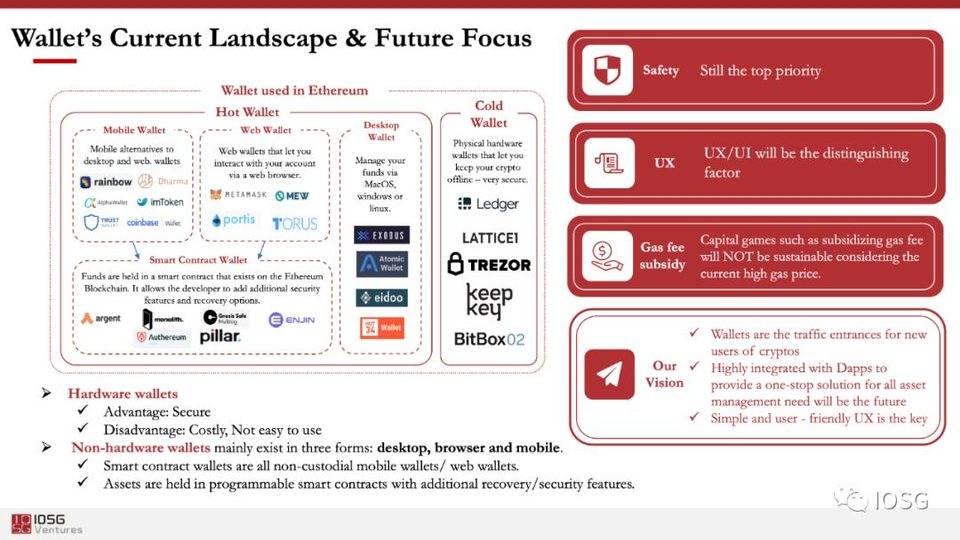
Wallets serve as entry points for traffic, helping blockchain reach beyond its niche and attract more users. The mainstream applications of blockchain rely on the mature development of front-end wallets. We see that wallet projects are now developing towards mobile platforms.
Many projects have developed smart contract wallets using the editability of smart contracts, allowing users to log in, use, recover, and manage their wallets in a Web 2.0 manner. The use of smart contracts is a key innovation for wallet projects to reach novice users.
We believe that in the wallet sector, asset security remains the most important consideration. Relying solely on capital operations to compensate for transaction fees is definitely not a long-term user acquisition strategy.
We believe that a simple and user-friendly interface has become the foundation for success in the highly competitive wallet market today. However, the most important thing is to create a one-click asset management platform that is highly integrated with DeFi projects. Users should be able to complete all DeFi transactions and understand all DeFi projects without leaving the wallet application.
Wallets remain a sector that IOSG is highly focused on in terms of user aggregation. We look forward to supporting excellent teams in creating a convenient and user-friendly wallet product while ensuring asset security.
Finally, let me talk about how we plan to move forward in this industry and what our expectations are.
Over the past three to four years, we have established a Founder Network and invested in around sixty to seventy companies in the entire crypto world, including many star unicorn projects. In 2017, we reviewed all platform infrastructures, including NEAR Protocol, Avalanche, and Oasis Labs, adhering to a pyramid investment logic built from the bottom up.
However, in this era, having money alone is not enough for an investment fund. We need to imagine what value we can bring to our partners. We have been actively participating in community governance, joining the Ethereum Enterprise Alliance, and providing various suggestions and additional value beyond investment.
Therefore, I believe that over the past three years, we have gained market trust that is evident to all, and LPs trust us greatly. We will continue to execute our investment logic and adhere to our investment philosophy over the next five years. I am also very grateful to the old friends who have helped us along the way. It is your perseverance that has made us realize the power of persistence. Every journey begins with a wait; we must not disappoint expectations and continue to move forward. We will soon launch our Fund 2.
I believe that in this era of growth, let us walk hand in hand without asking where we are headed.









